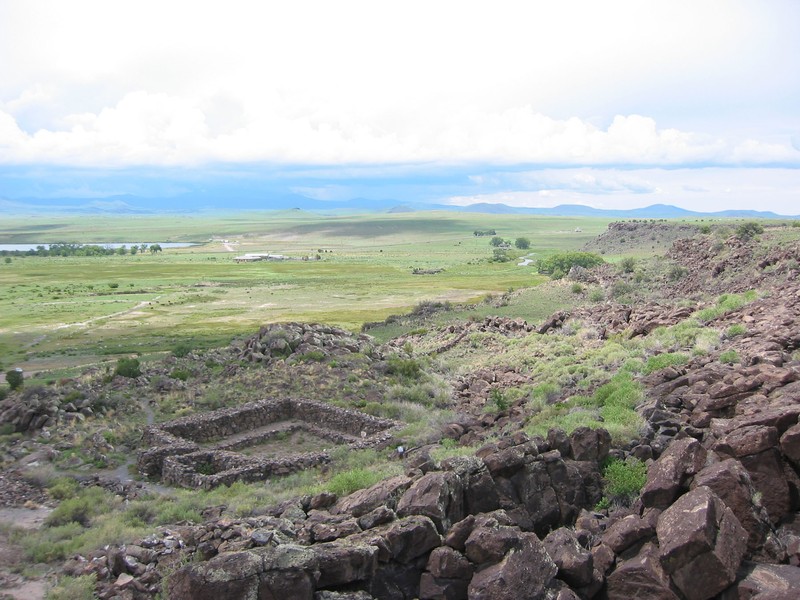Casa Malpais
Introduction
Text-to-speech Audio
Casa Malpais is the site of an ancient pueblo inhabited by people of the Mogollon culture from around 1260 to 1400 C.E. Located in the Springerville volcanic field, it features the ruins of a 50-60 room pueblo, a solar calendar, a staircase that rises up to a shield volcano, and a structure called the Great Kiva. The structures at Casa Malpais, which means "house of the badlands" in Spanish, were built with volcanic rock. The Great Kiva and solar calendar suggest that the pueblo was an important religious and/or political center. There are also petroglyphs on the adjacent cliff face, which may strengthen the possibility that Casa Malpais was a significant place of ritual. The site is accessible by guided tour only through the Casa Malpais Archeological Museum in Springerville.
Images
Designated a National Historic Landmark in 1966, Casa Malpais is the site of an ancient Mogollon pueblo featuring the ruins of several structures including a kiva, staircase, and solar calendar.

Backstory and Context
Text-to-speech Audio
People of the Mogollon culture inhabited an area encompassing present-day eastern Arizona, western New Mexico, and northwestern Mexico. Three other contemporaneous cultures of the Southwest were the Hohokam, Ancestral Pueblo, and the Patayan, who were located in southern California. The Mogollon culture was named after the Mogollon Mountains in New Mexico (the mountains were named after Spanish Governor of New Mexico, Don Juan Ignacio Flores Mogollón [1712-1715]). The area in which the Mogollon lived features high altitudes, deserts, and plateaus.
Archaeologists divide the Mogollon culture intro three periods: Early Pithouse (ca. 200–550 C.E.), Late Pithouse (550–1000 C.E.), and the Mogollon Pueblo period (1000-1400 C.E.). Initially, Mogollon people foraged for food. Gradually, they began living a more sedentary lifestyle, residing in pithouses and planting crops including maize, bean and squash. By the beginning of the Late Pithouse period, they moved to floodplains and built large pithouse villages. They started to erect stone pueblos in the Mogollon Pueblo period. The pottery the Mogollon made became more sophisticated as they transitioned to larger, permanent settlements. Pottery in the early period was brown but it evolved from red-on-brown, to white-on-red, and black-on-white.
Artifacts unearthed from the site in the early 1990s are housed at the Casa Malpais Archaeological Museum. Visitors can also watch a film about the site at the museum, which is located in the Heritage Museum building in Springerville (418 E. Main St.). Casa Malpais is listed on the National Register of Historic Places and a National Historic Landmark.
Sources
"Casa Malpais." Town of Springerville. Accessed October 21, 2023. https://springervilleaz.gov/casamalpais.
Dunbar, Helene R. "Casa Malpais." National Park Service - National Register of Historic Places Nomination Form. July 18, 1988. https://npgallery.nps.gov/NRHP/GetAsset/NHLS/66000936_text.
Archaeology Southwest: https://www.archaeologysouthwest.org/explore/casa-malpais-archaeological-park/
